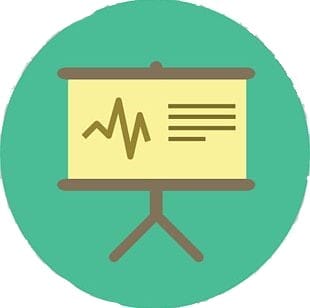Advertising disclosure
Hosting Canada is community-supported. We may earn a commission when you make a purchase through one of our links. Read Disclosure.
How to Make Money Day Trading
 The idea of day trading is exciting—you can buy securities and sell them later that same day for a profit. Unfortunately, it’s not as simple as buying low and selling high. Day trading is challenging, especially for beginners, and it’s not without numerous risks.
The idea of day trading is exciting—you can buy securities and sell them later that same day for a profit. Unfortunately, it’s not as simple as buying low and selling high. Day trading is challenging, especially for beginners, and it’s not without numerous risks.
Even the most experienced day traders can have difficulties and may lose substantial sums of money.
Nonetheless, if you want to begin online trading, it’s best to do so with a solid understanding of the market, strategies, and what to look out for. That way, you can begin day trading with confidence.
What to Know Before You Start
![]() Before you start trading, our guide our beginner's guide to online trading may be helpful.
Before you start trading, our guide our beginner's guide to online trading may be helpful.
If you don’t have financial capital from a corporation, you’re essentially gambling with your own money. For example, one bad bet could set you back substantially, and one bad day could knock you down for good.
For that reason, you should only trade with money that you can afford to lose. You don’t want to be the person who day trades with money you might need to pay your bills. Most day traders are well-funded, meaning they have more stability even when they lose.
Starting Small
Similarly, it’s advisable to start small. You’re a beginner, so you’re going to run into bumps along the way. You’ll make mistakes and lose a little bit of money, but then you’ll learn and improve. Start small by placing just a single percentage of your capital that you’ve decided to use, so you can minimize the effects of your mistakes.
If you’re interested in making day trading a career, you should begin by only trying it on the side in your spare time. This is for two reasons. First, you may not even enjoy day trading. Maybe it’s too much stress, or it just simply doesn’t interest you like you initially thought.
Second, as you’re a beginner, you can’t count on making a livable income right away. It may take some time to get up to speed before you can make this your full-time job.
Lastly, do your research. There are plenty of blogs, videos, and other online resources you can reference to learn more about trading and various stocks. Take the time to read, watch videos, and educate yourself before jumping in. To be extra safe, you can also practice on a market simulator which will give you experience without the actual risk of losing money.
Day Trading Strategies
![]() Most day traders base their trades on technical analysis—they read stock charts and analyze how they move throughout the day. Day traders aren’t concerned with the company, its management, or anything else.
Most day traders base their trades on technical analysis—they read stock charts and analyze how they move throughout the day. Day traders aren’t concerned with the company, its management, or anything else.
All they want is to make a quick profit, and to do just that, day traders often rely on one main trading strategy, although many do mix more than one or utilize a hybrid.
Scalping
One of the most popular day trading strategies, scalping is a basic form of day trading where “scalpers” look to sell as soon as they make a profit. These kinds of day traders simply want to make money on a purchase that they made, and once they do, they sell.
This strategy may not be the most lucrative, but it can minimize the risk of becoming too greedy and losing profits. Plus, this strategy allows traders to buy and sell several securities easily within the day. Scalpers typically open and close their actions within minutes. They’re in and out quickly to maximize their chance of earning profit.
Trend Following
Otherwise known as momentum trading, trend following is when a trader bases their actions on what’s in the news, recent reports from the company, or other “trends” that will affect price movements.
Day traders can buy a stock that looks to be gaining momentum thanks to the report, news, etc. This type of day trader will then sell their securities as soon as they see signs of a reversal. Alternatively, these traders can also do what’s known as fading, discussed below.
Fading
Fading is essentially when day traders short stocks. When a stock rises in price, often a quick rise from news, these traders will take the opposite position of other buyers. The idea is that there will come a point where that stock begins to normalize and drop back down to its average price.
This style of day trading is not easy or without risk, but when it’s done correctly, it can be quite effective. Traders can close their positions when the stock falls in price, as mentioned, or when buyers jump back in.
Securities to Look Out For
![]() Deciding what to trade is an important step, as you have numerous options. You can trade options, bonds, futures, currencies, stocks, and even cryptocurrency.
Deciding what to trade is an important step, as you have numerous options. You can trade options, bonds, futures, currencies, stocks, and even cryptocurrency.
However, the most common, and likely the easiest, to begin with are stocks. To start trading any security, you’ll need to pay attention to all of the following.
Liquidity
The liquidity of a stock signifies how easily it can be converted into cash without dramatically affecting the asking price. Thus, if a stock has high liquidity, it’s easy to buy at a good price. The stock is said to have a tight spread where the difference in the bidding and selling price isn’t significant.
Volatility
The volatility of a stock refers to how often the price changes. The more volatile a stock is, the more likely it is to have frequent swings in prices, and thus, the riskier it is. As a day trader, you’re looking for stocks with some volatility, but not too much as you want to minimize risks.
 Volume
Volume
The next thing to keep in mind is the trading volume of stocks. The trading volume is how many stocks are being bought and sold in a given time range.
The higher the volume, the more interest the stock has from traders and investors. Often, when a stock’s volume increases, there will be a price change that could go up or down.
Other Things to Keep in Mind
While those three things are fundamental for all-day traders, there are additional factors to consider. As a day trader, you can decide to trade only the stocks you're familiar with. That way, you’ll be more attuned to the news, earnings reports, and other indicators that will affect the price.
Additionally, you should be aware of what’s happening in the media with that stock. Does it have a lot of coverage? If so, that stock likely has a high volume which can then increase volatility and liquidity.
When to Trade
 Another key aspect of day trading is knowing when to act. Depending on your preferred strategy, you may make anywhere between a handful of trades to more than a hundred trades.
Another key aspect of day trading is knowing when to act. Depending on your preferred strategy, you may make anywhere between a handful of trades to more than a hundred trades.
On any given day the market is open, the most activity in trading is seen within the first two to three hours after the market opens, 9:30 AM EST. Then, the last hour before the market closes, 4:00 PM EST, there will be another jump in activity.
These are the times when you should be trading as there is more activity—volume—which increases volatility and liquidity.
How to Limit Your Losses
![]() Everyone who is involved in investing, whether day trading or long-term holding, should be trying to minimize their losses and protect themselves while online trading "Investing is a risky business, and loss is likely— trades don’t go always how you want them to go.
Everyone who is involved in investing, whether day trading or long-term holding, should be trying to minimize their losses and protect themselves while online trading "Investing is a risky business, and loss is likely— trades don’t go always how you want them to go.
For long-term investing, diversification is often the main risk management strategy. For day traders, it’s more complicated.
You should always have a strategy in place for when trades go awry.
Be aware of the size of your bets, the potential for loss, and at what point you need to pull out. You should set a number each day for how much you’re willing to lose before you end your trading that day.
Additionally, you can purchase your stocks by using stop-loss orders. You can place this order at a price that you determine is enough risk—that you can lose this amount of money before selling. You may set this price at a recent low, or if you’re shorting, at a recent high. Once the stock hits that price, they sell automatically.
Is Day Trading Right for You?
![]() Day trading is not a career or a practice for everyone. If you’re new to investing as a whole, it’s likely best to start with index funds or exchange-traded funds. This way, you’ll begin to learn about investing with significantly less risk.
Day trading is not a career or a practice for everyone. If you’re new to investing as a whole, it’s likely best to start with index funds or exchange-traded funds. This way, you’ll begin to learn about investing with significantly less risk.
However, if you’re interested in making day trading a career, you must know it’s time-consuming and more difficult than other forms of investing.
You should already have a solid grasp of the trading and investment world, and you’ll need to be able to put in the time to learn how to properly analyze securities. What’s more, you should have sufficient capital to the point that you’re not worried about losing money in the market.
The Bottom Line
Day trading is a potentially lucrative career path that is not without ups and downs. You must be knowledgeable, persistent, willing to make mistakes, and willing to put in the time. Furthermore, you need to be aware of the risks and implement risk management strategies.
If you’ve decided day trading is for you, check out this post about the best stock trading platform.










